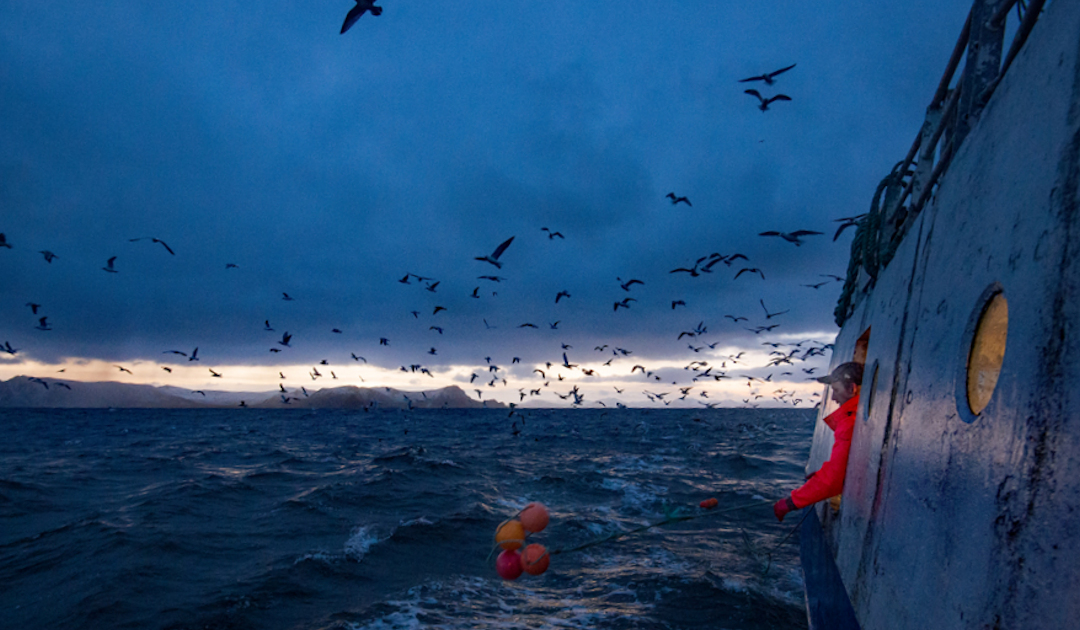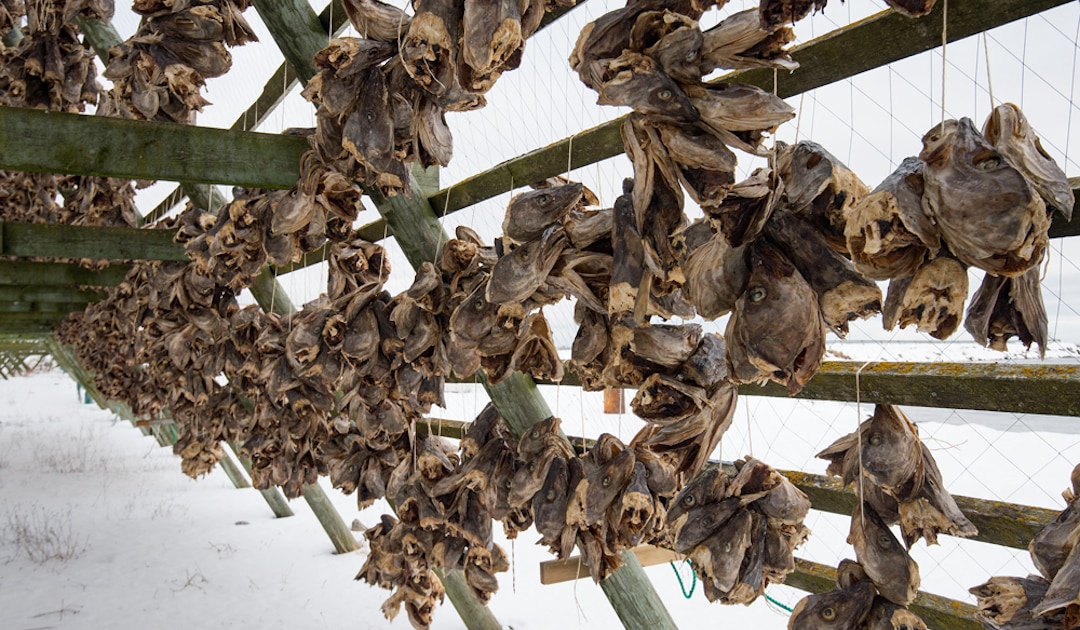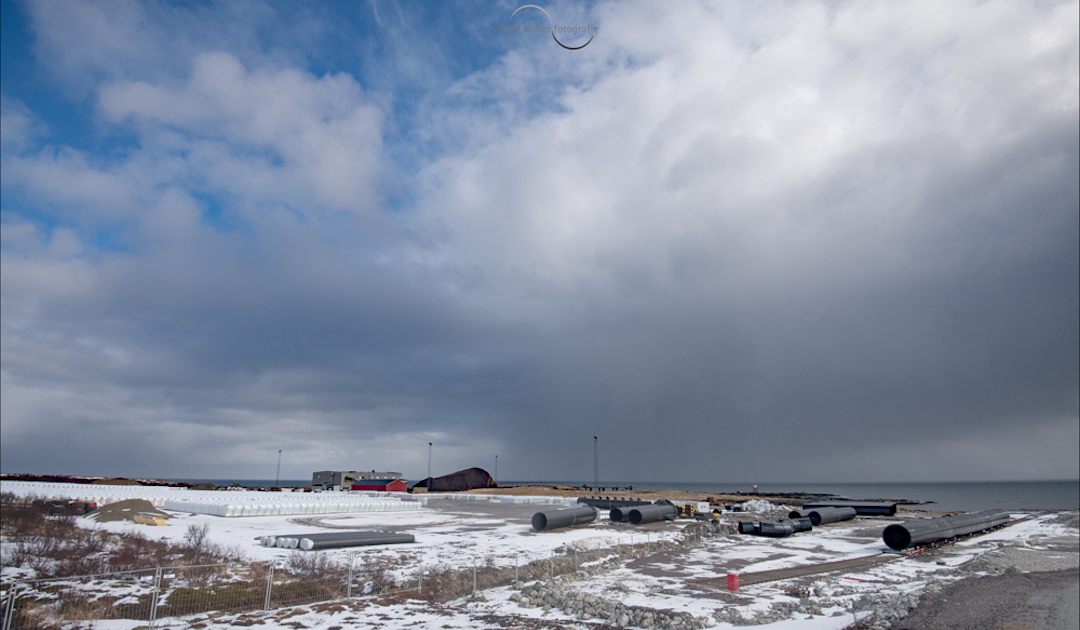
In 2050, 9.7 billion people will live on earth. The supply of mankind with sufficient food will then at the latest become a challenge. Aquaculture can make an important contribution to solving this problem. The Norwegian company Andfjord Salmon AS now wants to reinvent the wheel in aquaculture and is building the “world’s most fish-friendly and sustainable land-based aquaculture facility” in Vesterålen..
According to estimates by the United Nations (UN), the earth will be populated by around 9.7 billion people in 2050. That’s 2.9 billion more than it was in November 2020. In parallel, the lifestyles of the inhabitants of emerging countries will increasingly move towards a “Western” lifestyle. And with this development, their eating habits will also change drastically.
Due to the projected population growth, the World Health Organization (WHO) expects per capita meat consumption to increase by 25% by 2050. Even without this increase, agricultural production would have to be increased by 50-70% percent to meet the food needs of the people then living on Earth. Producing enough food will sooner or later become a global challenge. Food production is still growing faster than the world population. But it is by far not only about sufficient nutrition, but the longer the more about a healthy diet.

The basis for food production is fertile soil, fresh water and marine fish stocks. The sea has or will have an important role in providing food for billions of people. According to analyses by the Food and Agriculture Organization (FAO), however, fish yields have stagnated since 1990 and have even declined in some cases. The FAO stresses that products from aquaculture make an important contribution to nutrition.
Hopes for a stabilization and improvement of the global supply situation are pinned on the “Blue Revolution” proclaimed in the mid-1960s by the World Bank together with the FAO. This was an attempt to improve the food situation – especially the supply of protein – in developing countries. Not least through the production of marine food by coastal aquaculture in sea and brackish water.

Aquaculture has been the fastest growing branch of the food industry in recent decades. In 2012, for the first time, aqua farms worldwide produced more food than all the cattle farmers in the world. And in 2018, over 114.5 million tonnes of fish, molluscs, crustaceans, algae and other aquatic organisms were produced in aquaculture worldwide (FAO, 2020).
Aquacultures are therefore well on the way to supplying the world’s growing population with sufficient animal protein. A great advantage of this is that fish convert practically every gram of food into their own body mass. Cattle, on the other hand, need seven kilograms of feed per kilogram of steak.
Other advantages include:
- Conservation of natural wild fish stocks
- Opportunity for developing countries to produce cheap food
- Multiple use of offshore wind turbines
- Job creation in socially disadvantaged regions
However, not all aquacultures meet the standards for ecological and species-appropriate fish farming. The side effects are often similar to those of agriculture: destruction of natural habitat, water pollution, use of pesticides and antibiotics, to name just the most important. Accordingly, the topic of aquacultures is discussed in a polarizing manner. In order to get the problems under control in the long term, the WWF initiated an exchange of ideas for more environmentally friendly aquacultures in 2004. Five years later, this resulted in the Aquaculture Stewardship Council (ASC), a broad-based, independent organization that sets the standards for aquaculture(www.asc-aqua.org).
Now the Norwegian company Andfjord Salmon AS is setting out to reinvent the wheel in the aquaculture sector. Nothing less than “… to build the world’s most fish-friendly and sustainable aquaculture facility of its kind” is what founder Roy Bernt Pettersen has set out to achieve. The aim is to create a future-oriented facility that is exemplary for the sustainable development of the aquaculture industry. Andfjord Salmon has worked with the Aquaculture Stewardship Council for certification of its aquaculture sites from the beginning.

Andfjord Salmon has patented its innovative concept for farming Atlantic salmon. The company’s guiding principle is based on innovation for sustainable salmon farming. The future fish farms should consume a minimum amount of energy, have low operating costs and have as little impact on the environment as possible. Specifically, this means:
- Pool with flowing, oxygen-rich Atlantic water
- a patented method for cleaning the pools
- no energy required to heat or cool the seawater
- Secure barriers that prevent the escape of farmed salmon
In addition, the company’s own photovoltaic and wind power plants will reduce the energy costs of the entire production facility. The well thought-out overall concept of the plant prevents the problems with salmon lice or toxic algae known from conventional aquacultures. Cleaning robots at the bottom of the pools permanently ensure that the pools remain clean. An innovative multiple cleaning system prevents pollution of the surrounding sea. Martin Rasmussen, CEO of Andfjord Salomon and father of two little girls, stresses how important it is for the project to leave as small an ecological footprint as possible.
State-of-the-art filter systems capture and remove unwanted particles or biological substances. The biological residues are further processed by the neighbouring company Andøytorv AS in peat moss as a garden supplement. A report by the Norwegian Institute for Bioeconomics (NIBIO) came to the following conclusion in this respect: dried fish sludge from Andfjord Salmon’s fish farms can be further processed into “growing media such as organic fertiliser or organic-mineral fertiliser for agriculture and horticulture”. Or as Martin Rasmussen puts it: “We can make money with fish shit”.
At the extraordinary general meeting on March 19, founder Roy Bernt Pettersen relinquished his chairmanship. The project is currently in a transition period from the development to the production phase and so, in mutual agreement with the board, he has decided that a new executive with more experience in salmon farming should take over.” Roger Brynjulf Mosand was unanimously elected as the new chairman. Brynjulf Mosand is no stranger to the industry. He has successfully been CEO of Nordlaks Produkter AS since 2001.

At the beginning of the year, the first basin was successfully connected to the sea water supply. The rearing ponds are located below sea level and had to be blasted into the rock for this reason. The pools are designed in such a way that the fish have enough space and a natural current is simulated. Depending on the season, the water is drawn from depths of between 30 and 160 metres. This guarantees that consistently tempered, fresh and oxygen-rich seawater is always used. One of the most important differences to conventional, land-based plants is that the water is not recycled, but there is a continuous renewal of fresh seawater (flow-through technology). The west coast of Andoya is predestined as a location, since fresh Gulf Stream seawater is available here all year round.

Andfjord Salmon will build a total of three basins with a volume of 29,400m3 each on the east coast in the north of Andøya. This summer, smolts – the name given to the young salmon that migrate from freshwater to the Atlantic – will be introduced into the first of the three basins in order to demonstrate the feasibility of the project in principle (proof of concept).
The long-term goal is to achieve an annual production volume of 90,000 tons of fish. Andfjord Salmon will then be one of Norway’s largest aquaculture companies.
“I have dreamed of this for a very, very long time. I have had this dream for half a lifetime” Roy Bernt Pettersen is quoted on the homepage.









After using fresh Atlantic seawater in the ponds, and after the solids are removed and processed, where does the contaminated water go? Back onto the sea?
THank you for your interesting question: All information here are according to the company: Yes, it is a flow through system that releases the sea water back into the depths. As the water is processed and residues, pathogens and harmful substances are removed, the water will be flowing back into the ocean. The water is not contaminated as there will be no use of antibiotics or growth enhancers according to the company.
Also, if you would like to get first-hand information, you can send questions directly to the CEO Martin Rasmussen at post(at)andfjord.no.